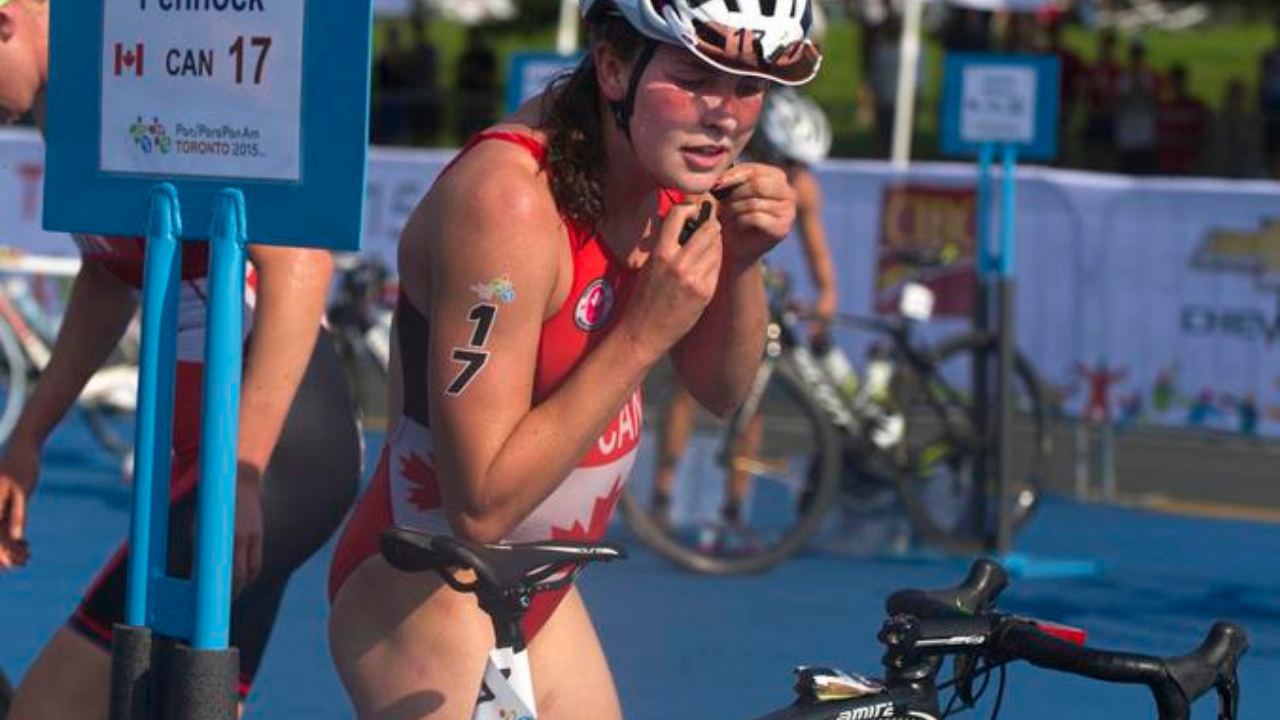
How to Master Triathlon Transitions Like a Pro
May 20, 2022Race season has officially begun in the northern hemisphere. As wetsuits are inspected for tears and tri suits dug out of bottom drawers, we hear familiar echoes of “where the actual f*@k is my race belt?” As a longtime coach, athlete, and mentor, I am here to give you four weeks of practical race information.
Text by Miranda Bush, Feisty Triathlon Head Coach & Educator
This article is the first part of a 4 week race series to help you get to the start line confidence (& feisty as always).
Triathletes are notorious for obsessing over every watt and gram of weight, but they often ignore the fourth sport of racing: transitions. For beginners, transitions are strange and unknown territory. Long-time triathletes still eff them up (often because they blow off practicing them), and many pros can tell you about a race that was won or lost by the seconds they could have saved by putting on their shoes… just a little quicker. And although there really isn’t a less fun and feisty part of triathlon, that little squiggle on your race day Strava profile still requires some training attention. It is time to try to master transitions.
Contrary to popular opinion that is based on inconsistent research, women are not “better” at multitasking than men, and all humans are subject to fumbling and forgetting things when under pressure. And no athlete needs to waste time in the spaces between showcasing your hard work and talents. So as a coach, I give veteran or beginner women and men the same advice regarding transitions: set up smart and practice often.
How to Set-up Smart
Arrive at transition early. Be sure to check what time transition opens and closes and then get there early. Giving yourself ample time to scope out the scene, set up your space, use the bathroom, and recheck your setup is far more productive than having a few more minutes of fitful sleep or being stressed out at home. In larger races, your spot will be assigned, but in smaller races, you often rack your bike on a first-come/first-served basis. Arriving early lets you get a spot you can easily remember, ideally near the bike out.
Arrange your gear by sport. Save steps by having your helmet, bike shoes, and running shoes unclipped and/or open and easily accessible to put on quickly, with your bike gear in front of your run gear. Pay attention to whether or not people are racking their bikes by the handlebars or the saddle and follow the protocol (most large races require it to be racked by the saddle). Be considerate of space, setting up a small area by your front wheel if racking by the saddle and near your back if by the handlebars. Don’t bring unnecessary equipment (no buckets unless your physical condition requires a place to sit!). Shift into a comfortable gear before racking, and if you drop off the day before keep your tire pressure low. Inflate to desired pressure on race morning.
Familiarize yourself with the area. Before you head to the start line, learn where you will bike in/out, run out, and mount/dismount your bike. Memorize where your bike is in relation to these ins and outs. Seek out the closest bathroom options too. If needed, try to plan tampon changes for transition so you can grab them as you go, rather than carry them along.

Practice Often
Practice as you’ll race. Again, you don’t have to want to win the race to be smart and swift in transition. But this is definitely a “you do you” time and not one to let comparison distract you. Practice your own plan and methods and follow through on race day. On race day do not do things out of your safety comfort zone (like, ahem – flying mounts and dismounts) unless you have practiced often. This not only poses a safety risk to you but also to others around you.
Use the gear that allows for faster transitions. You don’t have to be a pro to invest in some simple pieces of equipment that can help you have quicker transitions. When possible, wear shoes with elastic laces. Be sure to fasten your helmet before leaving transition with your bike, but you can save a few seconds by clipping your race belt while starting the run. Plan to take in nutrition while moving forward, rather than hanging out in the transition area.
Manage your effort. Practice different methods and decide ahead of time how you want your heart rate to react in transition to benefit the rest of your race. Note the length of time from the water to the transition area and decide if you will run or walk from the swim finish. Decide if wearing a wetsuit saves you time and energy, if taking it off gives you a chance to lower your heart rate, or if the stress raises it. For shorter races, practice with and without socks.
Practice under stress. Have someone time you going through all of the motions of transition. You can also have some fun with this practice – staging contests with team members, friends, or families. If you are racing long course triathlon, get some quality transition practice at shorter races leading up to your goal.
Try to not choke. Psychologist and University of Chicago Professor Sian Beilock notes that “Choking… occurs when you feel the pressure to get everything right.” When you try to control every aspect of what you are doing in a moment in order to ensure success, you risk choking. Practicing can give you a more confident, methodical approach that allows more presence in the moment without overthinking. But in addition to practicing, it is helpful to visualize how you will react if things do not go exactly as planned. You can then navigate disruptions in transition with ease (like someone else’s wetsuit thrown on top of your running socks, or the panic of not finding your bike).
Give yourself grace when working toward mastering any task. Masters are still imperfect humans. So when you fumble, laugh it off and move on – even long-time veteran triathletes make funny mistakes in transition (like wearing bike helmets on the run or putting bike shoes on before taking off wetsuits). Your energy is not served well by focusing on your foibles in your race moment, so shake it off and take what you learn back to practice. You can be a master, while also still in training.

Miranda Bush is the Head Coach and Educator at Feisty Triathlon. She is USA Triathlon and Training Peaks certified, as well as a certified Health Coach. She is also a graduate of Dr. Stacy Sim’s Women Are Not Small Men and Menopause for Athletes courses. As a longtime coach specializing in training women, her passion lies in using lessons from training and racing to teach athletes to evolve physically, mentally, and emotionally through sport. Miranda is also a longtime athlete and multiple Ironman and 70.3 distance podium finisher, maintaining a consistent racing career while working and raising her kids. She resides in Wisconsin with her three teenagers and husband who all love to race triathlon.
Get Feisty Triathlon straight to your inbox
Get the low-down on what's happening in the world of women's triathlon, tips & tricks to crush it on the race course and be the first to know about special offerings from our feisty sponsors.
We hate SPAM. We will never sell your information, for any reason.

